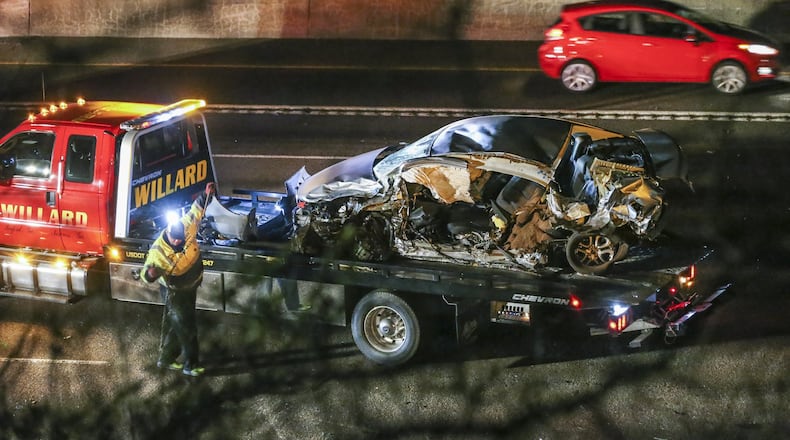Texting while driving and other bad behaviors have fueled a spike in motor vehicle deaths in Georgia and across the nation over the past two years.
Such deaths jumped by a third from 2014 to 2016 in Georgia — the fifth-highest increase in the country and more than twice the national average, new data from the National Safety Council shows. Fatalities rose 14 percent nationwide during the same period.
ROAD RAGE QUIZ: Are you a ‘punishing’ driver?
More than 1,500 people died in motor vehicle accidents in Georgia last year alone, according to a report released by the council Wednesday. Across the United States, 40,200 people died in such accidents, making 2016 the deadliest year on the nation’s roads since 2007.
“The top three killers are speed, alcohol and distraction,” council President Deborah Hersman said. “The same things that have killed us for decades are still killing us.”
It’s unclear why the Peach State outpaced other states and the nation in rising fatalities. But pedestrian, bicycle and motorcycle deaths all rose by double-digits last year in Georgia, according to separate state Department of Transportation statistics. So did fatalities involving vehicles that ran off the road – a sign that drivers may not be paying attention behind the wheel.
Credit: John Spink
Credit: John Spink
Hersman singled out cell phones as a major cause of distracted driving. She said at least 3,000 people die each year in accidents caused by distracted driving – many of them, she suspects, caused by cell phones.
“People are addicted to these devices. They do everything with them,” she said. “It’s very hard to separate people from these devices in this 24-7 connected society we live in.”
You don’t have to tell Dan Cowles of Cumming people aren’t paying attention. A retiree, he sees drivers fiddling with their phones all the time when he’s traveling.
“Cars will wander across the white line. They’ll do it several times,” Cowles said. “When you go by them, you see what they’re doing.”
The National Safety Council is an education and research group that seeks to eliminate preventable deaths. The study counted motor vehicle fatalities on the nation’s public roads, as well as those on private property.
The council said cheap gas and an improving economy – which means more people on the road – may have also contributed to the rise in deaths.
Harris Blackwood, director of the Governor’s Office of Highway Safety, said it can be hard to determine whether cell phone use caused an accident unless a driver admits it. But he has no doubt phones have contributed to the increasing number of deaths.
One sign that drivers’ use of phones is widespread: traffic citations. In 2010, Georgia prohibited adults from texting while driving and barred anyone under 18 with a learner’s permit from using wireless devices while driving. Through 2014, the state had processed more than 7,100 citations for violating the two laws.
“The (driving) behavior is similar to that of a drunk, because they’re going to be all over the road,” he said. “The only difference is, the texter is completely focused on that screen, and the drunk is trying to stay focused on the road as best they can.”
Cowles said he doesn’t have a cell phone. But he understands how people can be distracted while driving. His own car has buttons that allow phone users to “text,” “answer” and “hang up.”
“It’s like you’ve got this whole office console in front of you,” he said.
Hersman stressed that other behaviors – like drunk driving, speeding and failing to wear a seat belt – also play a big role in deaths.
She proposed a variety of measures to reduce deaths. Among them: banning all use of cell phones while driving, deploying more red light cameras and equipping more vehicles with safety features like adaptive cruise control, which automatically maintains a safe distance from other vehicles.
But she acknowledged such solutions may not be popular and seemed resigned that they will not be adopted soon.
“We’re talking about tens of thousands of lives, and we know exactly what we need to do,” Hersman said. “We don’t have the will to do it.”
The 5 states with biggest rise in motor vehicle deaths, 2014-16
New Hampshire: 49%
Vermont: 45%
Oregon: 41%
Idaho: 36%
Georgia: 34%
Source: National Safety Council
About the Author
The Latest
Featured



